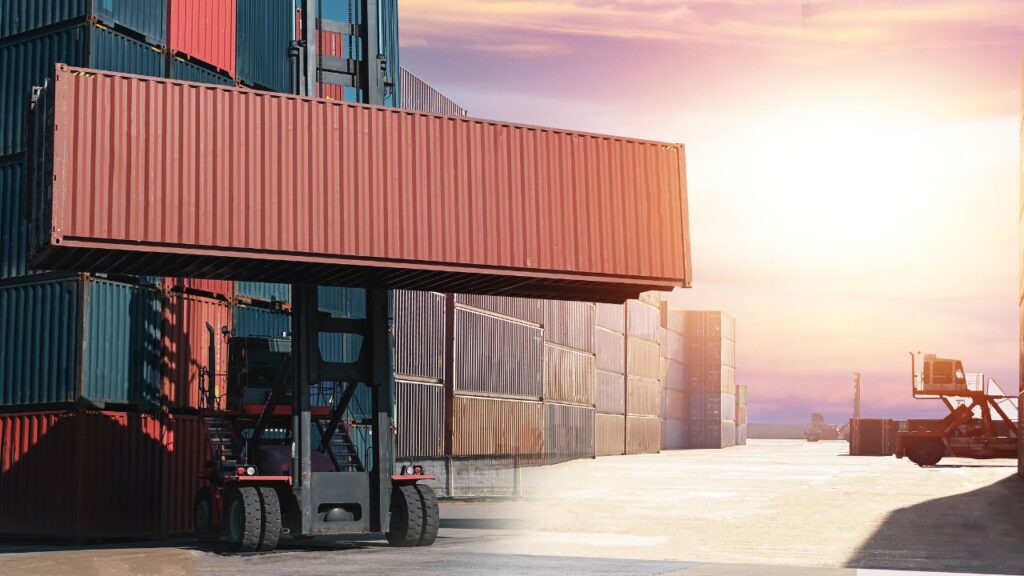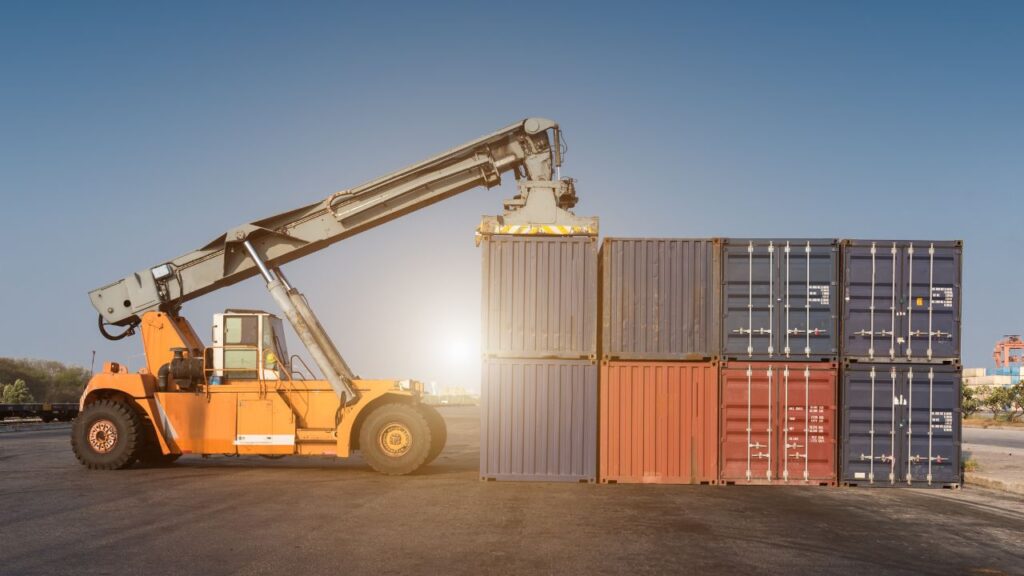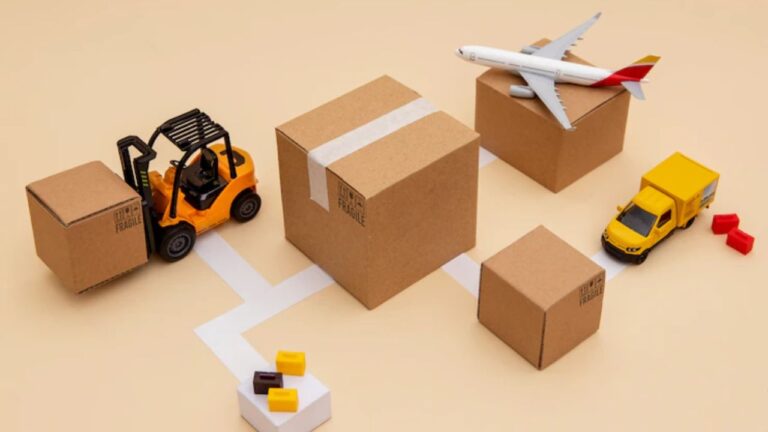There are many stages a product goes through before reaching the buyer’s door. One of the most extended things these goods go through is transportation. Regarding transportation, you’ve probably heard the term drayage many times.
To understand what drayage services are, let us cover the questions of drayage meaning, service, costs, and more.
What Is Drayage?

Drayage is a freight service that moves goods from one truck to another in a warehouse or ocean port. It may involve the movement of goods from a supplier to a retailer through in-store deliveries.
The job of a drayage truck is to transport cargo from marine ports to warehouses, factories, and other destinations on land.
How Are Drayage Rates Calculated?

There are a few aspects that go into computing the cost of drayage. The most common include:
· transportability (can be moved by pallet jack, forklift, etc.?)
· distance from the final destination
· type of packaging
· total weight of the shipment
Intra-drayage carriers and many carriers charge a base fee based on the above factors. Together with those, accessorial costs come into play as well.
What Is Intermodal Drayage?

Intermodal shipping refers to transporting cargo by truck, rail, or sea instead of using only one mode of transportation. Intermodal shipping also refers to loading cargo into intermodal units, helping shipments move effortlessly between different modes of transportation.
Six Types of Drayage Services

You will find six types of drayage services in the supply chain and logistics industry.
1. Inter-Carrier Drayage
Remember that inter-carrier drayage mentions the transport of cargo between different carriers. This could be from sea to rail, rail to sea, or rail to rail.
2. Shuttle Drayage
Shuttle drayage is temporarily used to store an excess container that cannot fit in shipping hubs. Such docks get loads daily but do not have sufficient ships to carry the cargo.
3. Expedited Drayage
Expedited drayage refers to the transfer of goods where it’s needed and is often utilized to transport cargo where they are urgently needed. It’s a faster process than other multimodal transport on this list.
4. Intra-Carrier Drayage
Intra-carrier drayage is a short-haul trip normally utilized to transport goods within the transport hub. It is utilized when goods are scheduled to board a vessel or plane in another dock or should be shipped to the container freight station (CFS).
5. Door-to-Door Drayage
Door-to-door drayage transports cargo from the port straight to the customer’s door. It’s often utilized in eCommerce, where door delivery is provided.
6. Pier Drayage
Pier drayage involves the trucking company picking up the goods from a rail or a Sea hub and sending them to a dock or pier where they’ll be loaded into a shipping line.
How Can I Reduce Drayage Costs?

Opportunely, there are a few tips you can do to prevent charges or lower the toll charges you owe.
Consolidate shipments
Drayage costs are computed based on the weight of the freight. You can lower the shipment’s overall weight by combining multiple shipments that round up to the next hundred pounds into one single shift freight.
Ship mixed loads separately.
Do you have a mixed load? You may prefer to separate the shipments under separate bills of lading. Depending on different carriers, you may be charged a higher rate for the entire freight of all types of freight kept together.
Mindful packaging
Floor-loaded crates often need lower rates, while pallets are a bit expensive. Also, freight and items that need special handling cost the most. Always consider the containerized cargo you’ll use when packing your cargo.
Ship efficiently
Try to ship in a few batches and be flexible with the pick-up and drop-off dates. Loading and unloading all your shipments at one time will save you from paying the costs of short distances and added trips.
Document everything
This tip applies to drayage services in the supply chain. Taking photos and documenting the shipment—even if it only has short-distance movements or is shipped in the same metropolitan area—offers you the evidence to back up any shipping claims that may happen when something goes wrong. That’s especially true if you’re involved in the long-haul shipping process.
That can help safeguard against erroneous changes in the arrival points.
FAQs about Drayage
Here are more questions answered on drayage services:
What is a drayage charge?
Drayage charge is the cost connected with national movements of goods over short distances from an intermodal hub, rail terminal, or warehouse to the port. That movement normally happens through trucking services.
It’s also the transportation of full containers through trucks.
What is a drop fee in drayage?
Remember that a drop fee is incurred in the container drayage whenever the same carrier drops a shipping container off at a distribution center or warehouse for pick-up later instead of loading the shipment.
That happens when freight needs extra handling time, like palletization, before loading into the container.
Are drayage and trucking the same?
Drayage is the specialty trucking niche, which has demand all across the globe. It is one of the foundations of the container shipping industry. It differs from other trucking niches due to the equipment and clearances involved.
How can I ask for a freight quote?
There are two ways you can do this. Fill out an online form, or you can email the shipping company. Request the commercial invoice, packing list, and other documents from the supplier, and create a quote prep list before asking for the quote.
Make sure you also approach numerous forwarders first for quotes so you can compare them.
Is drayage the same as intermodal?
On the surface, both intermodal unit services and container drayage share similarities. Nonetheless, there are a few differences. Intermodal uses a truck, rail yards or rail hub, and sea to cover distances, rather than relying on just one mode.
Drayage refers to the cargo’s transport over short distances by truck or as part of a longer distance.
What are drayage costs?
Once the base rate is established, other drayage costs make up the rest of the bill:
· chassis split fee
· detention and demurrage fees
· drop fees
· fuel and mileage surcharges
· pre-pull fees
· toll fees
What is freight out and freight in?
Freight out is the cost incurred in transporting goods with the delivery of it from a supplier to its customers. The cost must be charged to expense as incurred and recorded within the cost of goods sold classification on the income statement.
Meanwhile, freight in is the transportation costs linked with the goods’ delivery from the supplier to the receiving entity. The recipient adds the cost to the cost of the received goods.
What is a drayage truck?
Drayage trucks are heavy-duty, diesel-fueled trucks shipping containers and bulk freight between the port and intermodal hub and rail hub facilities, distribution centers, and other near-port locations.
Conclusion
Do you have more questions about drayage and want to save drayage costs? Contact us for a quick reply within 2 mins after sending an inquiry to our DFH team. Let us help to save drayage costs from now on.





